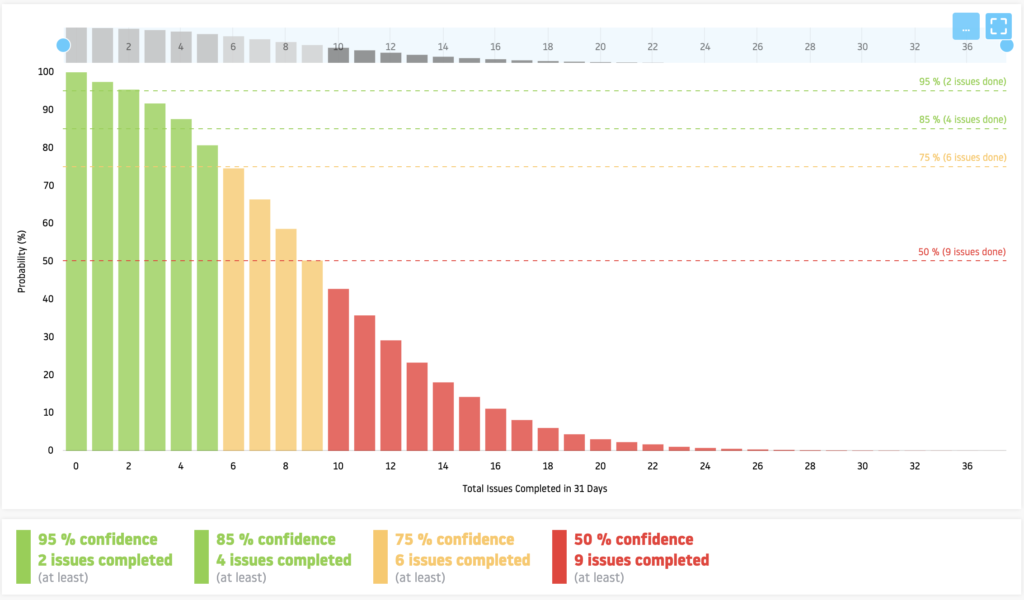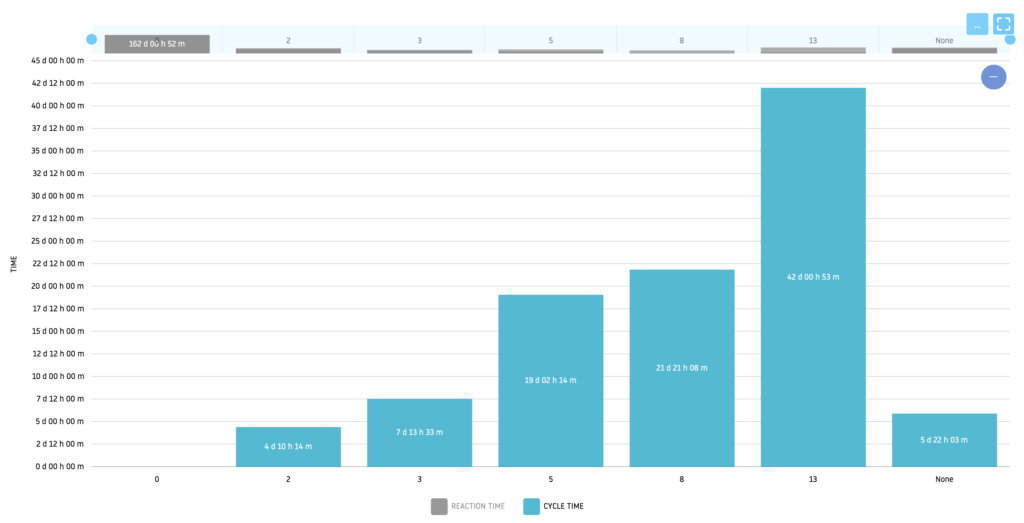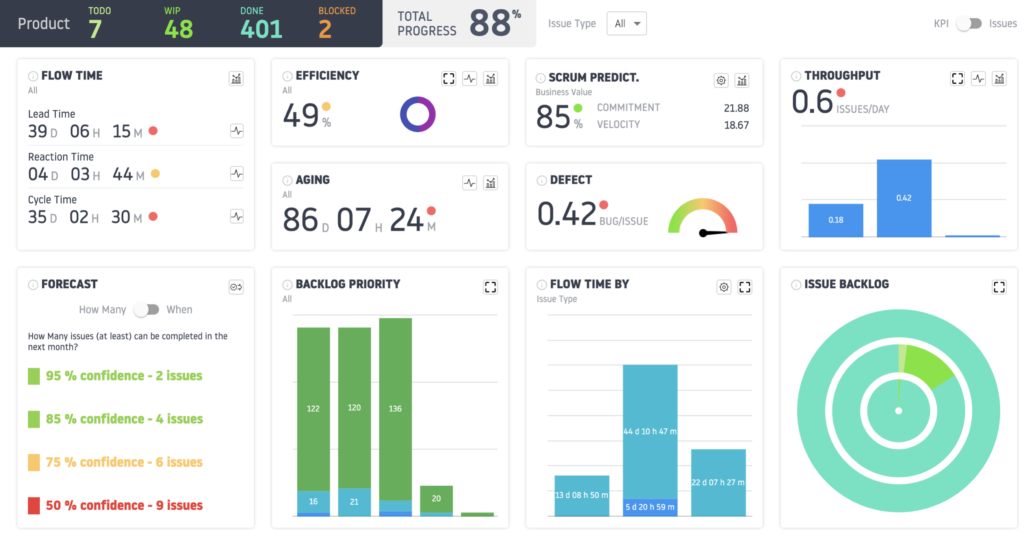
DO YOU WANT TO CHANGE TO NO ESTIMATE? START BY MEASURING!
Who has not experienced the famous injunction of having to estimate the work to be done in man-days (d/h), particularly in the world of software engineering.
Man-day estimates, although commonly used, have notable flaws. They often suffer from imprecision, excessive optimism, and create pressure on teams, especially when these estimates irremediably become rigid commitment obligations, without taking into account the need to adapt to changes and being an obstacle to creating value for the customer.
In the dynamic world of software development, more and more organizations are attracted to the principle of “No Estimate” to gain flexibility and agility.
However, achieving this holy grail requires careful preparation, and one of the cornerstones for a successful transition is the implementation of relevant measures and indicators.
This article explores the critical importance of measurement for organizations aspiring to “No Estimate” and offers insights into how an approach driven by relevant data and flow measurement can be the key to success.
What is “No Estimate”?
There is no official origin for the “No Estimate” movement. Its origins can be traced through several influences and experiences within the agile community, in the search for more effective ways to create products that provide more value to customers.
The fundamental idea behind “No Estimate” stems from questioning traditional methods of man-day or function point estimation, which are often considered (rightly) to be inaccurate, prone to over-optimism and incapable to quickly adapt to changes in product creation requirements.
En évitant la fixation rigide d’échéances, Les équipes qui adoptent cette philosophie cherchent à créer des processus plus flexibles, à minimiser la pression liée aux délais stricts, en favorisant ainsi la créativité, l’innovation et une meilleure réactivité aux changements.
However, for this method to be effective, it should not be an excuse for lack of measurement, but rather a call to rethink how we measure progress and performance of the value creation stream.
The need for relevant measures
“No Estimate” does not mean completely abandoning the measurement. On the contrary, it highlights the importance of measuring what really matters.
Organizations must identify indicators that accurately reflect the progress of projects, the quality of the work carried out and the value delivered to clients.
Rather than focusing solely on time and cost, these metrics should emphasize customer satisfaction, delivery frequency and the ability to adapt to changes.
What are the main flow metrics?
- Lead Time (LT): This indicator measures the time required to deliver a request, from its creation to its provision. For example, the time needed between the moment you order your product and the moment it is delivered to you in person.
- Reaction Time (RT – Support Time): This indicator allows you to measure the time needed for the team to handle your request. Imagine you place your order on Monday. This will not be automatically processed that day if the team is already busy on other tasks. If this is taken care of on Wednesday, then your Reaction Time will be 2 days.
- Cycle Time (CT) : Il représente le temps nécessaire à la réalisation d’une demande, dès que celle-ci est prise en charge par l’équipe. Vous pouvez mesurer le Cycle Time de toutes les étapes de traitement, mais également mesurer le CT sur chacune des étapes de votre flux, afin d’identifier à quel moment votre équipe passe le plus de temps sur un sujet et ainsi étudier comment réduire le temps de flux.
- Work In Progress (WIP): WIP allows you to measure, at a given moment, the outstanding value of your value stream, that is to say the number of elements currently being processed. This is a very useful indicator to check whether the outstanding amount is compatible with the team’s capacity to perform.
- Throughput: Allows you to measure the quantity of work completed over a given frequency (hour, day, month, etc.). This helps evaluate the team’s effectiveness in terms of continuous feature delivery.
- Aging: Aging allows you to define how long a request has been present in the value stream and thus identify stagnant or blocked requests.
How will these measures allow you to improve your predictability?
Each of these indicators is an element that allows you to measure the performance of your activity flow and check the quality level of your predictability, in particular by determining whether you are in a “disrupted” or “stable” flow.
They will also allow you to make projections via Monte-Carlo Simulation (statistical technique used to model the probable behavior of a complex system through the generation of random numbers based on a flow rate history, for example).

Another example, for Scrum teams who estimate in Story Point and who wish to check the relevance of these measurements or move to a Kanban mode, you can use the Cycle Time measurement by Story Point value.

In this example, let’s imagine that the team has a 2-week sprint, or 14 calendar days. The graph indicates that requests between 0 and 5 points are carried out within the period of a sprint, whereas from 8 points there is a great risk of not being able to deal with the subject during the sprint. This allows the team to refine their engagement and the level of granularity expected from requests.
Wiveez serving “No Estimate”
To facilitate the transition to “No Estimate”, the use of a digital application like Wiveez becomes essential.
Wiveez allows you to extract data from Jira to create custom dashboards and graphs.
This provides real-time visibility into crucial metrics, enabling teams and leaders to make informed decisions based on concrete data.

Data cleanliness as imperative
For measurements to be meaningful, data cleanliness is imperative.
Incorrect or outdated data can distort analyzes and lead to inappropriate decisions.
The importance of maintaining a clean and up-to-date database cannot be overstated.
Read the article “DO YOU WANT TO MEASURE? START BY TIDYING UP YOUR “ROOM”!“.
Conclusion
Moving to “No Estimate” is not an escape from measurement, but rather a reorientation towards more intelligent and meaningful measurements.
By adopting a data quality and value stream approach, organizations can truly unlock their creative potential while maintaining control over their progress.



